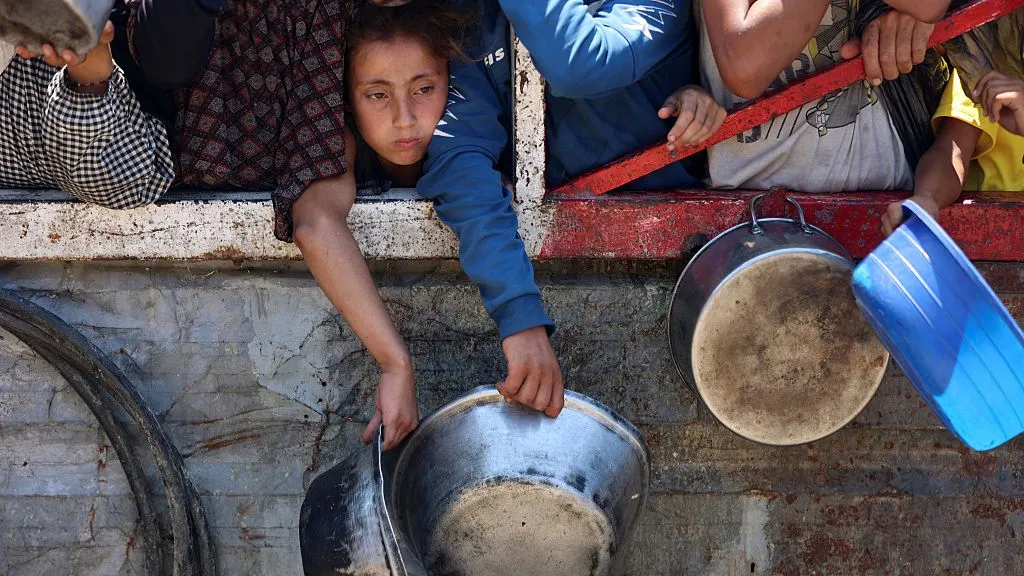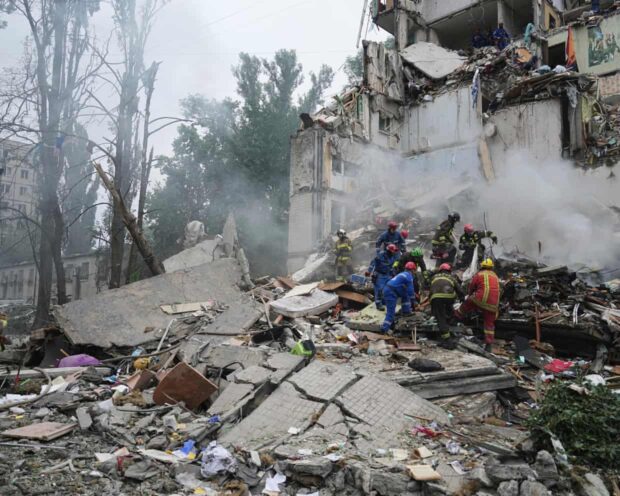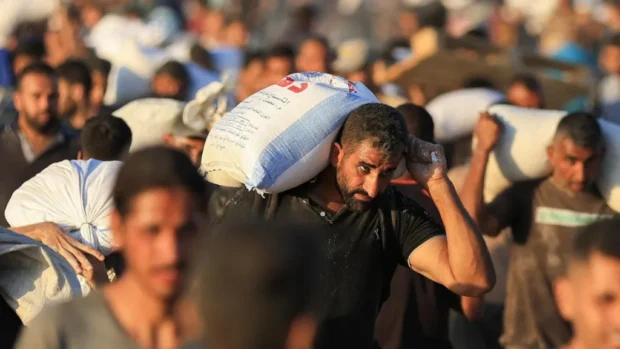
Israel has introduced new humanitarian measures following sustained international criticism regarding starvation conditions in Gaza. The Israel Defence Forces announced these steps would “improve the humanitarian response.”
The measures include allowing aid airdrops, with Israel conducting its first overnight operation and permitting UAE air force deliveries on Sunday. The IDF also announced “tactical pauses in military activity” in certain areas and established “designated humanitarian corridors” to address what it calls “false claims on intentional starvation.”
Hamas denounced these moves as “deception,” claiming Israel was “whitewashing its image before the world.”
During one tactical pause, Israel conducted an airstrike that reportedly killed Wafaa Harara and her four children – Sara, Areej, Judy and Iyad.
While Israel maintains it doesn’t restrict Gaza aid entry or cause the humanitarian crisis, these claims face rejection from European allies, the United Nations, and active agencies in Gaza.
The new measures may represent tacit admission that more action is needed, or serve as gestures toward allies who have issued strong condemnations.
A stark Friday statement from Britain, France and Germany demanded: “We call on the Israeli government to immediately lift restrictions on the flow of aid and urgently allow the UN and humanitarian NGOs to carry out their work in order to take action against starvation. Israel must uphold its obligations under international humanitarian law.”
Following a total blockade, Israel implemented restrictions on aid convoy approvals and movement. Working with Americans, it established the Gaza Humanitarian Foundation (GHF) to replace UN-run aid networks, claiming Hamas stole UN aid. The UN requests evidence for these claims.
UN and other agencies refuse GHF cooperation, calling the system inhumane and militarized. Over 1,000 Palestinians have been shot dead attempting to reach the four GHF sites, according to UN figures.
A retired US special forces colonel who worked for GHF told the BBC he witnessed American colleagues and IDF soldiers firing on civilians. Both parties deny targeting civilians.
Jonathan Whittall, head of UN humanitarian coordination in Occupied Palestinian Territories, condemned GHF methods. Israel declined to renew his visa after he posted that the GHF created “conditions created to kill… weaponised hunger… forced displacement… a death sentence for people just trying to survive… the erasure of Palestinian life.”
Following Israel’s announcement, Whittall stated “the humanitarian situation in Gaza has never been worse.”
He said meaningful improvement requires faster truck transit approval, better convoy routes, and “meaningful assurances that people gathering to take food off trucks won’t be shot by Israeli forces.”
As military operations continue, Whittall observes “abhorrent disregard for humanitarian law.”
Prime Minister Netanyahu and former Defence Minister Gallant face International Criminal Court arrest warrants for alleged joint criminal responsibility for “starvation as warfare method” and “crimes against humanity of murder, persecution, and other inhumane acts.” Israel denies these allegations.
Israel released footage showing transport planes dropping aid pallets into Gaza at night. The IDF reported delivering seven packages containing flour, sugar and tinned food.
Airdropping aid represents desperation. While potentially effective for television and public relations, it’s crude and insufficient to address Gaza’s hunger crisis. Only ceasefire and unrestricted long-term aid operations can achieve that. Transport planes carry less than small truck convoys.
Historical precedents demonstrate airdrops’ limitations. During the 1991 Gulf War aftermath in Iraqi Kurdistan, dropped aid included army rations and winter supplies for mountain refugees. While welcomed, young men ran into minefields pursuing landed aid, suffering casualties. Heavy pallets crushed families in tents.
In besieged Mostar during 1993’s Bosnian conflict, American military meals scattered across shelled areas, with pallets crashing through surviving rooftops.
Relief professionals consider airdrops last resorts when other access proves impossible – unlike Gaza’s situation. Ashdod’s modern container port lies nearby, with Jordan’s border providing regular aid supply routes.
Pre-war Gaza housed over two million Palestinians across territory slightly smaller than the Isle of Wight, comparable to Philadelphia or Detroit in size.
Israel has now forced most Gazans into a tiny southern coastal area representing roughly 17% of Gaza’s land, where most live in densely packed tents. Unclear if open spaces exist for aerial targeting.
Parachuted aid pallets often land far from intended recipients, becoming subjects of desperate competition among men seeking family food and criminal elements seeking profit.











Be the first to leave a comment